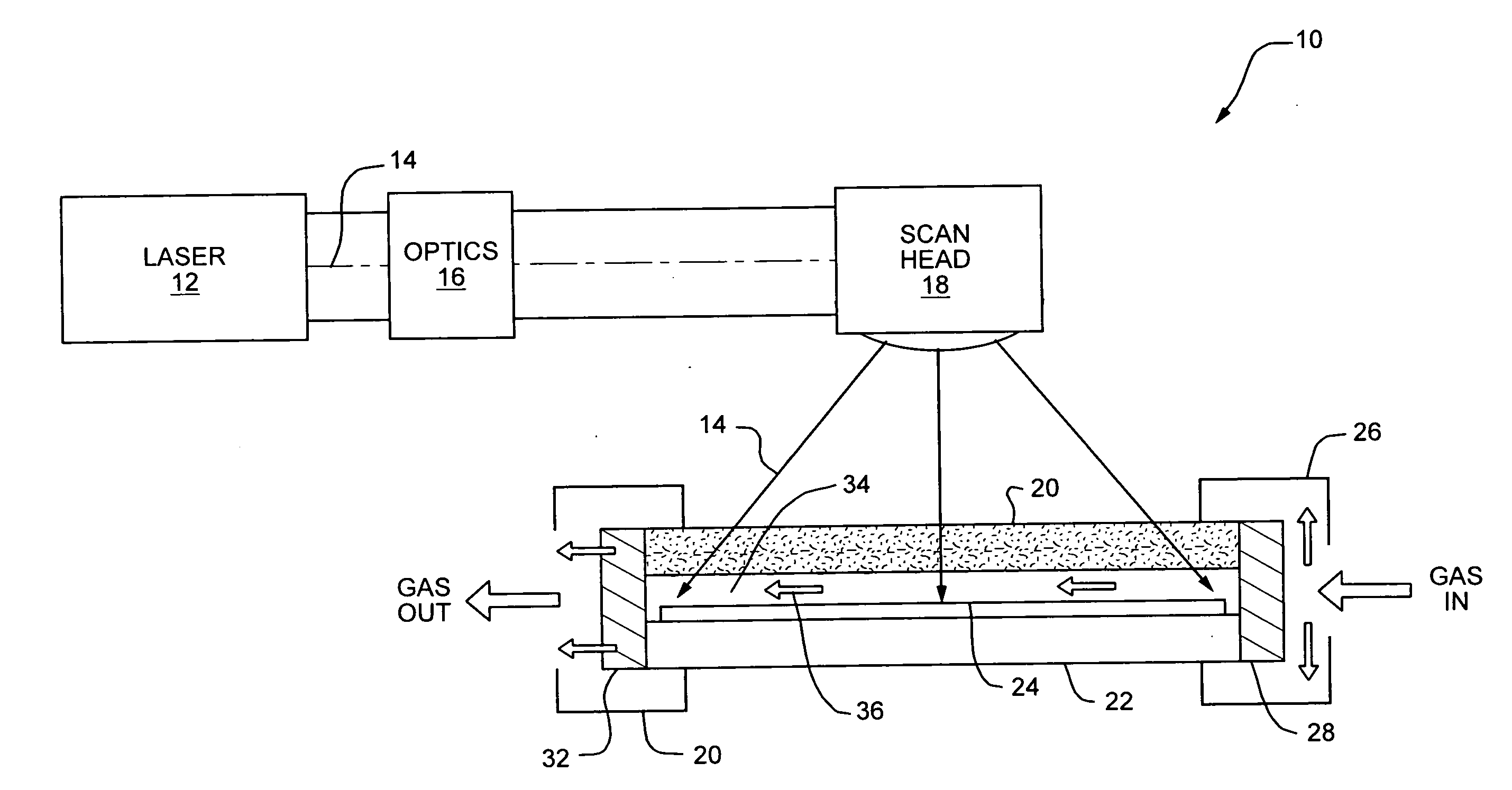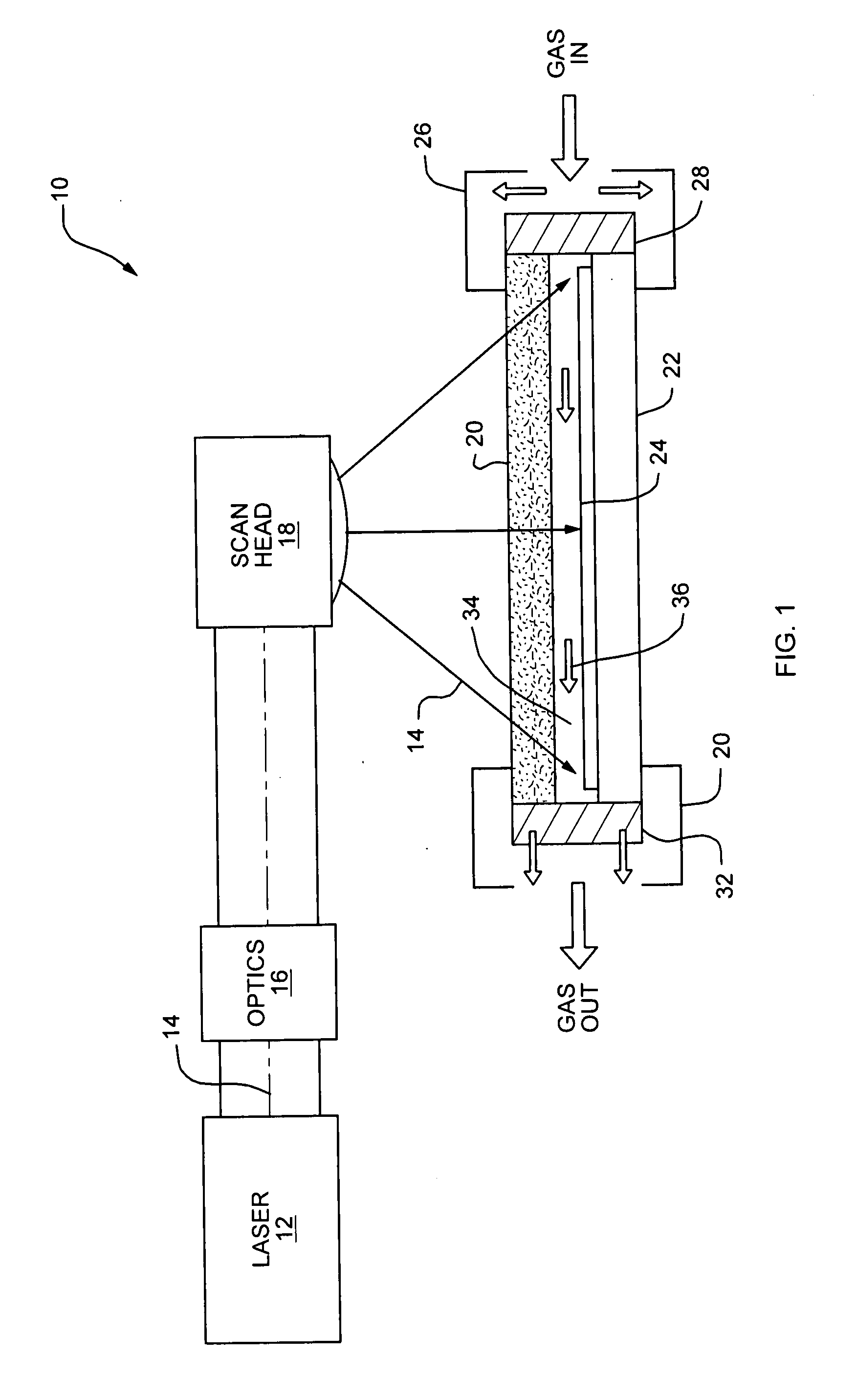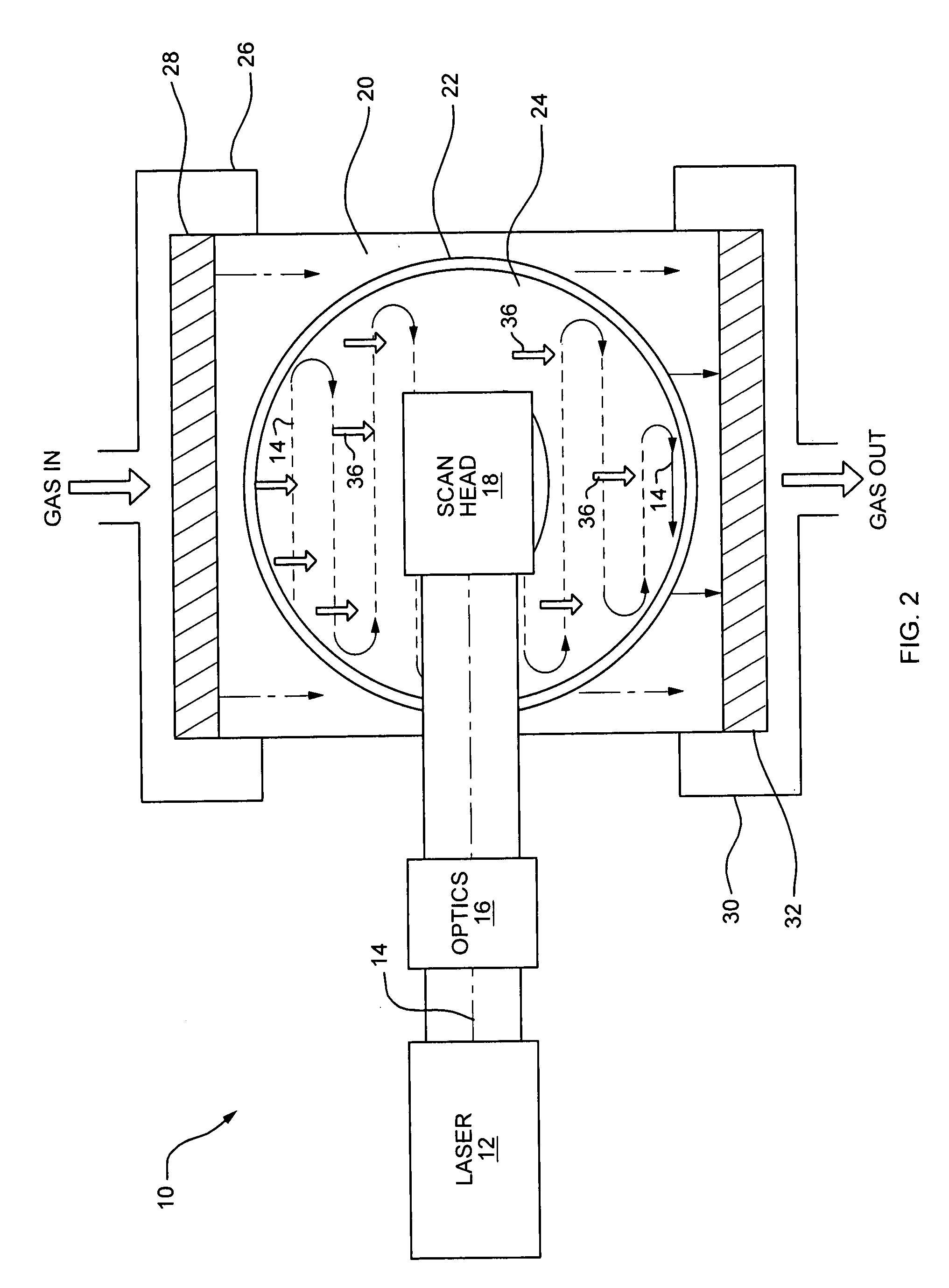Plenum reactor system
a reactor and plenum technology, applied in the field of plenum, can solve the problems of large internal volume, large cost of operation and maintenance, large internal volume, etc., and achieve the effects of high productivity, high efficiency, and high efficiency
- Summary
- Abstract
- Description
- Claims
- Application Information
AI Technical Summary
Benefits of technology
Problems solved by technology
Method used
Image
Examples
Embodiment Construction
[0035]A description of example embodiments of the invention follows.
[0036]In a preferred embodiment, the plenum reactor system of the present invention is designed to rapidly and efficiently clean or condition a substrate by using a highly confined internal volume in which an optimized gas flow and laser radiation produce reactions. The small internal volume uses a minimal amount of gas, and the linear gas flow in a confined space permits reaction by-products from the laser and gas reactions to be evacuated as they are produced, and not deposit back onto the wafer or on the walls of the reactor.
[0037]The plenum reactor system can operate at room temperature and at atmospheric pressure, eliminating costly vacuum pumps and associated hardware and long pump cycles. The plenum reactor system is also very compact, partly because it uses a small solid-state laser, and also because the chamber is only slightly larger than the substrate. The plenum reactor system of the present invention th...
PUM
| Property | Measurement | Unit |
|---|---|---|
| wavelengths | aaaaa | aaaaa |
| temperatures | aaaaa | aaaaa |
| laser wavelengths | aaaaa | aaaaa |
Abstract
Description
Claims
Application Information
 Login to View More
Login to View More - R&D
- Intellectual Property
- Life Sciences
- Materials
- Tech Scout
- Unparalleled Data Quality
- Higher Quality Content
- 60% Fewer Hallucinations
Browse by: Latest US Patents, China's latest patents, Technical Efficacy Thesaurus, Application Domain, Technology Topic, Popular Technical Reports.
© 2025 PatSnap. All rights reserved.Legal|Privacy policy|Modern Slavery Act Transparency Statement|Sitemap|About US| Contact US: help@patsnap.com



